After a decade of debates, the Smithsonian Institution was established on August 10, 1846.
The story of the Smithsonian begins with British scientist James Smithson, who died in 1829. His will stated that if his nephew died without heirs, his estate should go to the US to create “the Smithsonian Institution, an establishment for the increase and diffusion of knowledge among men.”
The US government was notified of this bequest following the death of his nephew in 1835. Senators debated whether they had the authority to create such an institution. Some in Congress wished to use the money for other purposes, but among those who pushed to use the money as it was intended was former president John Quincy Adams. Eventually, Congress ruled in favor using the money as Smithson requested. Representatives traveled to England to appear before the British court and returned to America in 1838 with about $500,000 for the Smithsonian.
However, the debating wasn’t over. Now the national discussion centered around what Smithson meant by “the increase and diffusion of knowledge.” Some believed this meant a university, while others suspected he wanted to create an observatory, scientific research institute, library, or museum. When it was finally established in August 1846, it included all of these except the university.
The Smithsonian’s first building, the Castle, was built between 1847 and 1855. It included an art gallery, library, chemical laboratory, lecture halls, and museum galleries. Since then, the Smithsonian has opened 18 other museums, galleries, and a zoo. In addition to a variety of art museums, there are two dedicated to aviation and the National Postal Museum, which houses the world’s largest stamp collection.
One of the museums, the Smithsonian American Art Museum (SAAM), is committed to the preservation of American art for the enjoyment of all. Its collections include art from colonial times through today. Portraits, landscapes, American realism, impressionism, and abstract art, as well as New Deal projects, sculpture, photography, crafts and folk art are all featured in its collections of over 40,000 objects.
Our national art collection got its start in 1829 when John Varden opened a room in his Washington, DC, home for the viewing of his European art collection. In 1841, the Varden collection moved to the elegant Patent Office Building, which also housed historic artifacts like the Declaration of Independence and Ben Franklin’s printing press. In 1846 the Smithsonian Institution was established and the collection moved to yet another building – the newly built Smithsonian Castle. Then in 1968, the collection moved one more time to its present home – back to the Patent Office building.
The Patent Office building is in itself a national treasure. It was the third public building (after the White House and US Capitol) to be constructed in Washington, DC, and one of the most beautiful examples of Greek Revival architecture in the United States. The building was used as a barracks during the Civil War, and then as a hospital and morgue after the battles of Manassas, Antietam, and Fredricksburg. Walt Whitman, who tended wounded there, described it as “that noblest of Washington buildings.”
The Patent Office was slated to be torn down to make room for a parking lot in the 1950s. Luckily, it was saved by a historic preservation movement and given to the Smithsonian in 1958 by President Eisenhower. In 1965, the Patent Office building was placed on the National Register of Historic Places.
Today, the Smithsonian is the world’s largest museum, education, and research complex. Nicknamed “the nation’s attic,” it houses more than 154 million items.
Did you know many stamps depict artwork or items from the Smithsonian? And did you know that we have limited supply of neat old stamps from the vaults of the Smithsonian National Postal Museum? Click here to browse all our stamps with connections to the Smithsonian.
Click here to visit the Smithsonian website.
| FREE printable This Day in History album pages Download a PDF of today’s article. Get a binder or other supplies to create your This Day in History album. |
Discover what else happened on This Day in History.

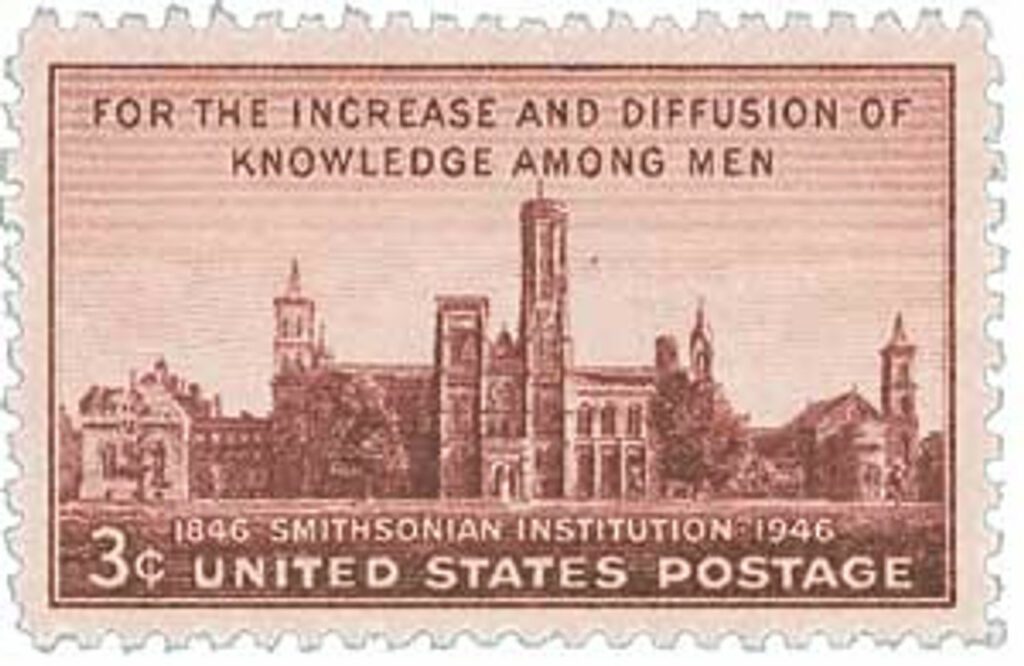
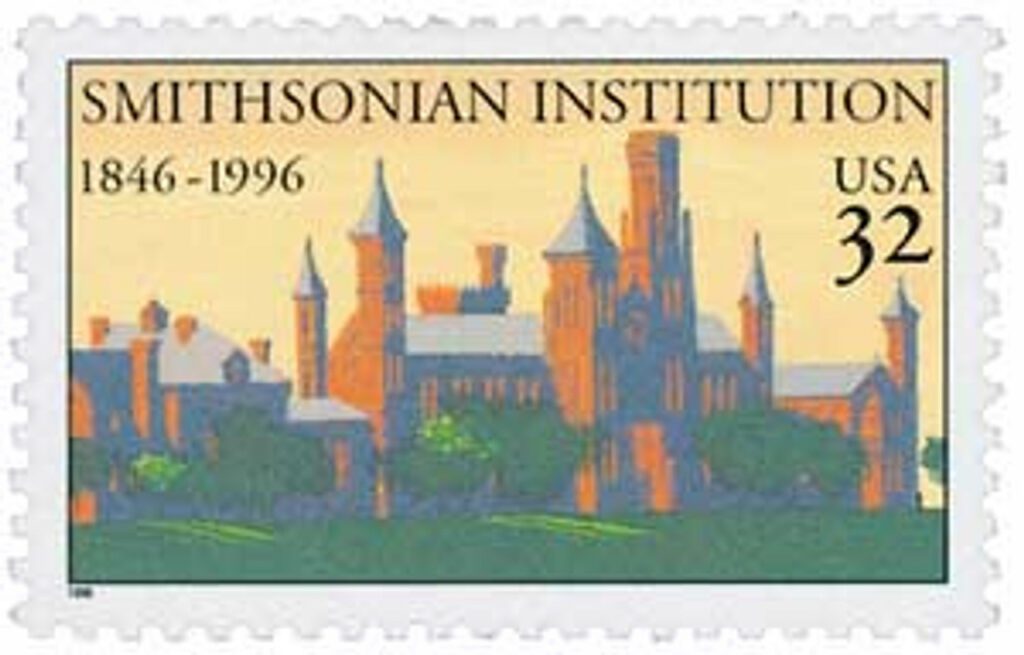
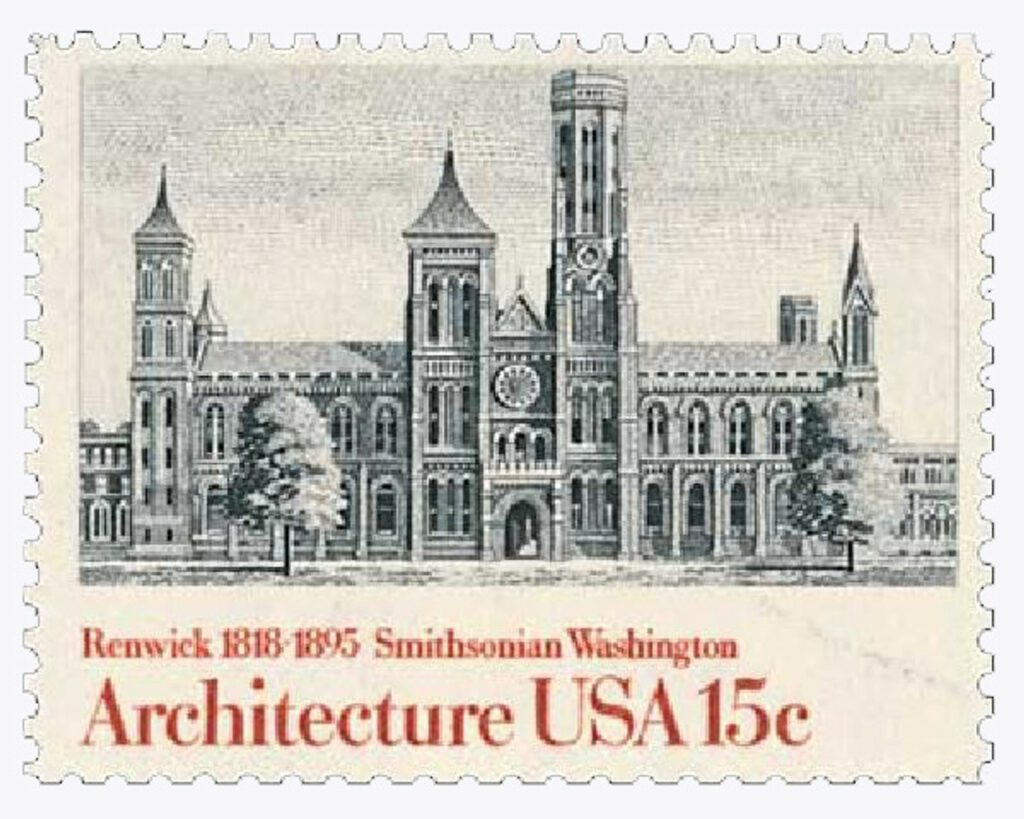

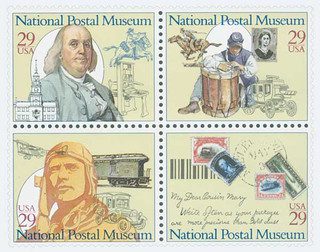
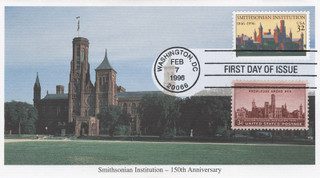
I have not collected stamps since the 1990’s, but I enjoy “Day in History”. It is very educational.
Great information. Thanks Don and team.
Like to see more stamps like #943 – shows more artistry than # 3059
I should think that #1838 is on a par with #943 – two to enjoy on a very enjoyable website! (I am wondering why my text is typing red characters – ???)
I’ve been to the Smithsonian Stamp Institute. I enjoyed the visit. So much history packed into the place. I highly recommend a visit there.